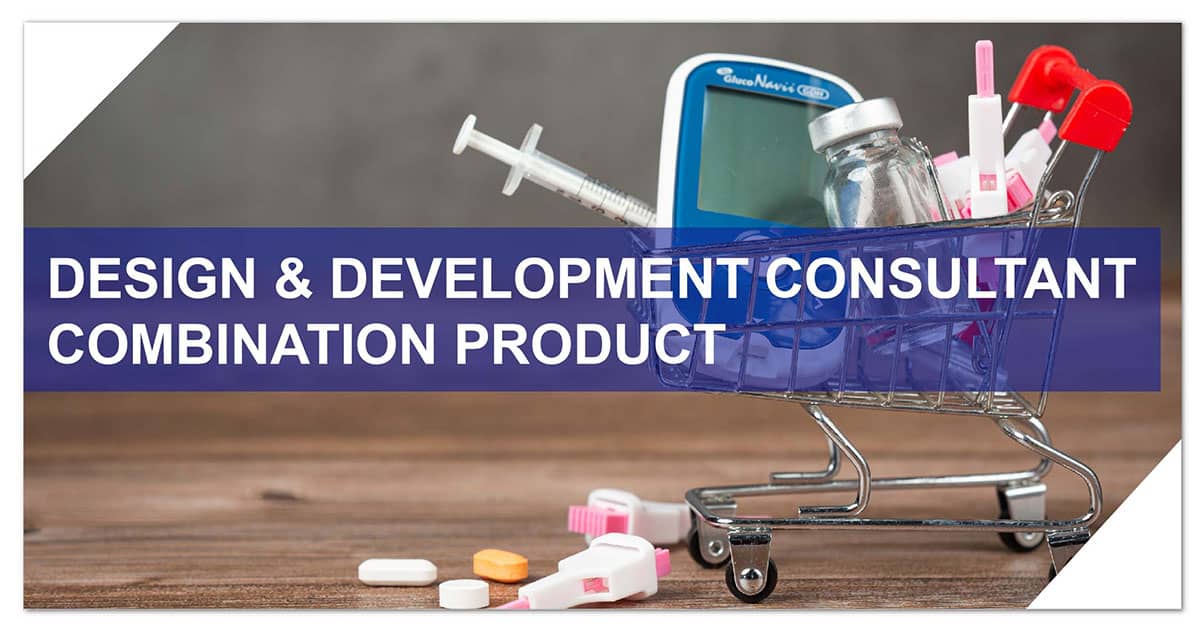Drug Device Combination Products
Drug Device Combination Products FDA Guidance
Combination product as indicated by the Code of Federal Regulation ,CFR is expressed as a product that includes a medical device /or a medication/or a biologic consolidating any two of these classifications and at some point even every one of the three. The well-known term of combination product is the drug eluting stent (DES) which is a scaffold covered with a drug to prevent scar tissue from developing in the supply artery. Most of the individuals have a constrained perspective on combination products. Today combination product are under development which includes a lot a larger number of things than just drugs, device or biological product , medical device. They include foods, they include nutraceuticals, and cosmetics agents or supposed as cosmeceuticals. Products that combine drug with device are named as Drug device combination.

As per the FDA combination product, types of combination product can be,
- single entity,
- cross labelled,
- co-packaged.
Combination Products example like prefilled syringes, applicators of the tropical products. Manufactures should have adequate design and development activity done so as to prove the adequacy of the safety and efficacy of the product. The medical device design and development activity is the systematic methodology, which establishes the proper design and development of the products. Many of the customer complaints and 483’s in case of the medical devices or combination devices are contributed to the improper of the design and development control activity. The design and development requirements of the product are described ISO 13485: 2016 and 21 CFR Part 820 also.
What is Combination Products Project Development Process & Design Control?
The Pharmaceutical organization which manufacturers the combination products are expected to implement the 21 CFR Part 210 and 211 and 21 CFR Part 820 for their manufacturing sites of the combination products. At the end of the design Phases, the DHF is compiled and shall be presented during the audits. The DMR shall be extracted from the DHF for the routine use and the tech transfer. The requirements mentioned in the DMR shall be used to create the DHR to demonstrate the routine production and compliances. As per the requirements of the ISO 13485:2016, the medical device file shall be established. The complexity of the design procedure is dependent on the Product complexity and intended use. The design control is a vital part as far as the Quality Management System goes.Our team takes hard efforts to implement proper QMS system for the manufacturers of UK.
Drug-Device Combination (DDC) as per MDR for CE Marking
Integral DDCs are products falling under the second sub-paragraphs of both Article 1(8) and Article 1(9) 62 of the Regulation (EU) 2017/745 on medical devices (the MDR).
Generally, These Devices Have Measuring, Metering or Delivery Functions.
Examples of medical devices in integral DDCs are:
- Devices for delivery to the site of action e.g. the dropper on the top of the container with eye drops the mouthpiece on the top of spray cans for throat sprays.
- Single-dose pre-filled syringes, pens and injectors.
- Multi-dose pens and injectors containing a pre-filled cartridge where the cartridge cannot be replaced, and the pen is not designed for subsequent use with a new cartridge.
- Drug-releasing intra-uterine devices; pre-assembled, non-reusable applicators for vaginal tablets.
- Dry powder inhalers that are assembled with the medicinal component and ready for use with single or multiple doses but cannot be refilled when all doses are taken.
- Implants containing medicinal products whose primary purpose is to release the medicinal product.
Examples of medical devices in integral DDCs are:
- Oral administration devices (e.g. cups, spoons, syringes)
- Injection needles and filter needles
- Refillable pens and injectors (e.g. using cartridges).
- Reusable dry powder inhalers; spacers for inhalation sprays
- Pumps for medicinal product delivery
- Electronic tablet dispensers
Each Manufacturer of a Medical Device in UK or all over the globe Shall Establish and Maintain the Following Procedures
- Control the design of the device
- Ensure that specified design requirements are met
What is CAPA Management For Combination Products?
CAPA management of drugs and device combination products are as follow:
To ensure that devices meet a requirement of Combination Products
- Users’ needs and intended uses
- Requirements and Specifications
- The regulatory pathway for combination products
- Can be reproducibly and reliably manufactured, serviced and/or installed.
Tools for Archiving Purpose of Combination Products
- Establish design control procedures.
- Develop plans for Design Projects(Include interfaces between R&D and other units)
- Identify design inputs requirements and high-level specifications for the device
- Develop design outputs (to final specifications)
- Design Verification through measurement, analysis, test or inspection that all design outputs fulfil input requirements.
- Transfer outputs to production
- Design Validation that the device performs and functions as intended and as users need an expert.
- Control changes during design and development and to existing devices Document design activities in the design history file.
Operon Strategist as a reliable medical device consultant assists companies and medical device manufacturers in UK , by providing consulting services that support the registration of drug-device Combination Products. We have experience with each constituent part and the GMP regulations that together form the basis for their development and manufacture: Drug (21 CFR 210/211), Device (21 CFR 820) and 21 CFR Combination Products (21 CFR Part 4)
